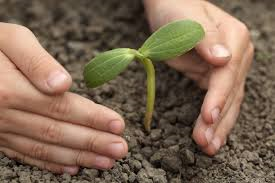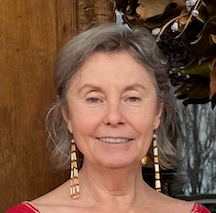by Prajna Piper
A meditation teacher of mine once quoted a Burmese teacher as saying ‘when everything that can go is gone, what’s left is the truth.’ That sentence resonated with me – I heard it maybe 20 years ago and I still reference it and repeat it a lot. And I think that’s because we know there’s already a truth in us, with us – it’s probably the one thing we really do know. This innate knowing may have gotten distorted, it may seem so removed that we have to project it outward onto a deity or a more spiritually refined person, instead of being everyone’s own known truth, but it’s still in there. That’s what spiritual teachers tell us. The kingdom of heaven is within. The guru is inside. Be a light unto yourselves. Know yourself.
Unfortunately, this is something that we forget a lot of the time. We get lost, and then, we have the ego to deal with as well. Decades ago, the Tibetan teacher, ChogyamTrumpa, coined a phrase, Spiritual Materialism. His classic book, Cutting Through Spiritual Materialism, is a brilliant look at how to work with an ego that can convert anything (in this case, the spiritual path) for its own use. Spiritual materialism is about acquiring something.
We probably all have had, at some point, a fantasy version about the payoff of spiritual life, where we’ll become better versions of ourselves and consequently have better lives. Or we’ll enjoy the blissful states and maybe have psychic gifts or we’ll be great teachers and have the respect of the world. Or maybe we’ll just settle down to an ever-present, undisturbed state of composure. We think about our spiritual growth in terms of personal gain. We even believe that we’ll achieve these things the way we do in the material world, that at some point our good deeds will tally up or our hard won powers of concentration will carry the day, as if we’re competing at the Olympics.
That’s spiritual materialism and it’s easy to understand how we can be taken in by that approach because that’s the way the world we live in views things. Why would we do something in the material world unless there was something in it for us?
But what if the fruit of practice really is letting go? What if chasing happiness is illusory, but letting go of unhappiness and its causes opens the door for something real – what if what is left is the truth and the truth sets us free?
This is what we get a glimpse of in a meditation where we’ve calmed down enough so that we don’t grasp at everything that comes into our mind. We’re there, aware of what’s coming and going in our experience, but our fascination with phenomena is no longer in the forefront. Instead there’s some calm, some peace, and a treasure, right there inside of us, to be carefully attended to.
I heard someone say once that they were afraid that if their mind stopped thinking, they would die of fear or of shock. That’s an extreme idea, but I think it’s maybe closer to how we function than we know. It’s an example of how counter-intuitive it is for us to let go of using the mind to try and create a fixed reality, a safe, static world where we – supposedly – know what’s what. It’s why we hold onto our stories, our suffering, our thoughts and associations; it’s why we cling to what keeps us in bondage, like some kind of a life raft. We think that our constructed reality is keeping us safe.
Ajahn Sucitto, a teacher in the Thai Forest tradition, says that when the constructed world falls away we won’t be left hanging in an abyss. He says, that in spiritual practice, falseness doesn’t drop away unless there’s already something there to step into – the virtuous qualities will be there. This is the point of the path of purification, which, in that particular tradition, includes cultivating the virtues of generosity, morality, renunciation, wisdom, energy, patience, truthfulness, determination, loving kindness and equanimity.
This teaching bothered me at first. It seemed, on some level, a little fishy. We’re going to cultivate habits, replace one habit with another? Even if it’s a healthy habit, that still didn’t sound like freedom. Ultimately, in my idealized view of enlightenment, conditioning will cease and every moment will be new.
Again, probably all of us who aren’t totally enlightened have our own idea of what enlightenment might be like. But, whatever our imaginations may offer, there is a practical reason why the virtuous, the wholesome qualities aren’t just another potential trap of conditioning. And that’s because the virtues aren’t sticky. There’s not much for the ego to cling to in goodness, because it’s ultimately impersonal. If we look at the qualities that are unwholesome, they are all about individuality, they have an identity, a personal self, stuck to each and every expression. We may get very confused about our individual manifestations of ill will, our desires, our dullness, anxiety or doubt, but we aren’t going to be particularly attached to or thrown by our individual experiences or expressions of kindness, generosity, wisdom or equanimity.
If we want to get to the truth, if we’re trying to touch, reach, or uncover the true self, then it does seem that we have to go inward. Ultimately, what is any sane person going to let in? Not the unwholesome. Nobody will trust that. But we will open to what we sense as innately wholesome, to the qualities that are trustworthy.
In meditation, when I see my mind fixing on something, chasing yet another train of distracted, inessential thought, I’ll often bring myself back by saying “not really who I am.” I remind myself that whatever my mind wants to chase is not what I’m going for here. I’m going for the truth and that thought, that passing idea, sensation, feeling, mental state, is not really who I am. Can I let it go?
There’s a lot to let go of in spiritual practice, a lot to see through. But I’m heartened by the fact that after decades of practice I understand a sentence that used to puzzle me -“The fruit of practice is letting go.” Our practices are like seeds that take root, they grow, they have blossoms, and then, finally they give fruit. The fruit of practice is the truth and it is what’s left when everything that can go is gone.


